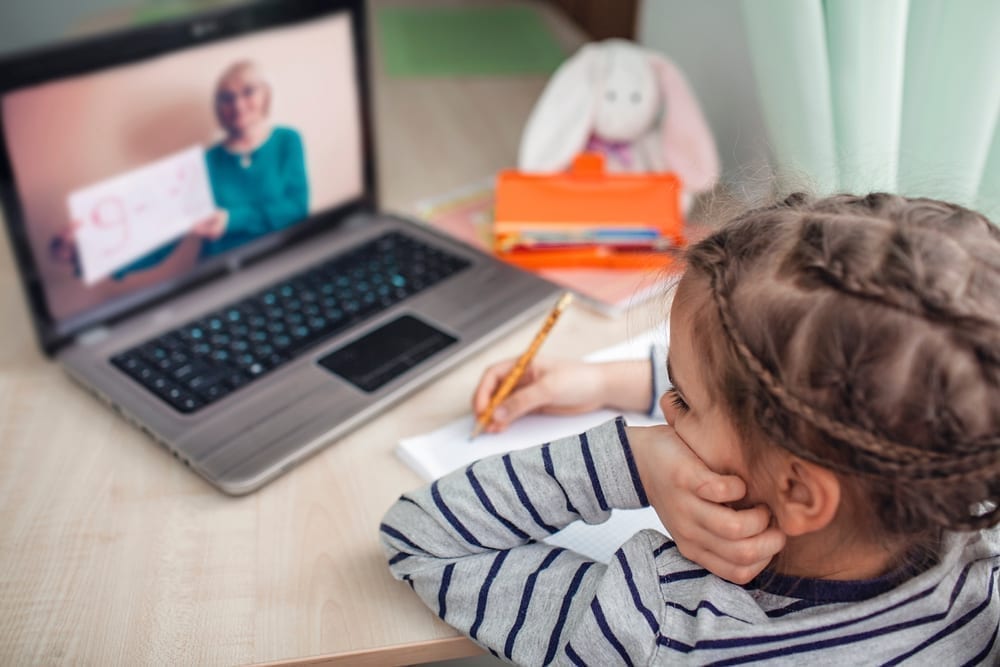Video Conferencing in Education

The world of 2023 has so much to offer when it comes to technology and how it affects education positively and negatively. Within these options, there are a variety of programs which offer the opportunity to meet with one or more people on video through the online environment. This has been a great step in educational and corporate environments as we recently dealt with a pandemic which closed school doors, and businesses. Online video meetings can prepare people and students for their future careers with the high usage in the professional setting. For instance, "about one in three Americans use live video chat to communicate with businesses" (Ivan Blagojevic). because However, there are also many cons that came along with this form of interaction. Recently, we have seen a rise in technological usage, including the use of online video interactions like zoom, google meet, FaceTime, Skype, etc.
These video conferencing sources can be used within education to have a virtual class, tutor a student, connect another teacher or professional to your classroom, collaboration for projects, etc. As an online teacher and student, I have seen many pros and cons of this virtual classroom and video conferencing setting. In a positive perspective, zoom has provided an easy opportunity to hold a live virtual lesson, where students can gather with their teacher, ask questions, chat with one another, etc. I am able to present my slideshow and see my students answer questions in a live setting from wherever they are. This provides great convenience for those in restricting situations. Many of my students have a variety of needs, IEP's, social anxiety, busy schedules, full time jobs, professional athletic careers, etc. I have found that video conferencing gives a great option for students with these specific schedules and needs because they have difficulty accessing an in-person educational environment. However, I believe it can hinder the in-person interaction and social skills which are needed to succeed and feel confident in this world.
Although, online video conferencing provides great convenience, it does introduce some negative results. For instance, I have found there to be a much larger rate of disengagement as an online teacher. Almost %20 of our classrooms are completely disengaged and choose not to submit work online, while roughly 70% skip live virtual lessons and watch a recording. This is an example of how video conferencing can be a challenge to moderate and assign. Of the 30% that attend live classes, about 8% turn on their camera, which is another example of the challenge to practice face-to-face interaction within this environment. Many students feel embarrassed to display their home-life or shelter which they are living within, or feel self-conscious to show how they look at home. Furthermore, video conferences can limit student-to-student and student-to-teacher interaction.
Overall, I believe video conferencing in the education system is a great supplement to in person teaching because is provides an opportunity for convenience, tutoring, and introducing guest speakers. For example, Danielle Chazen says "in offline courses, professors can also utilize video conferencing tools to dial-in professors or experts in the field to contribute live or speak to their students on relevant topics"(Video Conferencing in Education, Verbit). I believe it benefits the online schooling community through offering breakout rooms and collaboration opportunities. However, I believe that video conferencing can also take away from the importance of face-to-face interactions and interpersonal skills. It can also encourage students to be disengaged and make it a challenge for teachers to moderate student productivity.
Chazen, D. (n.d.). Video conferencing in education: Addition, alternative or future? Verbit. Retrieved April 16, 2023, from https://verbit.ai/video-conferencing-in-education/
Video conferencing statistics 2023. 99firms. (2023, March 7). Retrieved April 16, 2023, from https://99firms.com/blog/video-conferencing-statistics/#gref

Hey Sarah, I enjoyed reading through your thoughts on virtual learning and video conferencing. In my experience with students, I share many of the same opinions and experiences. So many of the students choose the asynchronous route and turn in their work to fulfill their academic obligation, whereas some tune in but are disengaged. I found that if a student really wants to experience something or learn, they'll be engaged regardless of the platform. I think that video conferencing has more upside in the summative sense, and in person learning typically has more benefits in the formative, leaning more heavily towards monitoring progress and dialogue. There is not secret that the ability to reach students outside the classroom is wildly beneficial, but is education without interaction worth it? Is the content going to stick? Can real learning occur without a relationship being built? These are questions I wrestle with weekly when considering all the ways we can improve education.
ReplyDelete